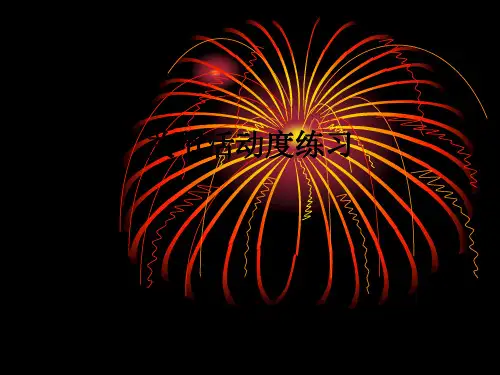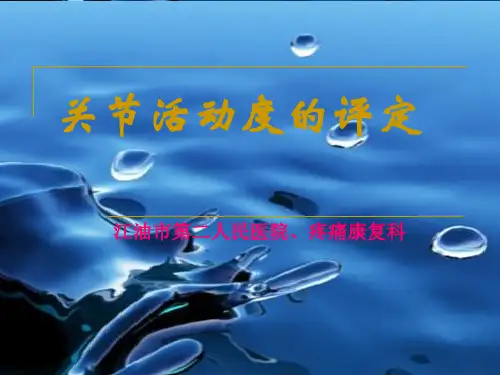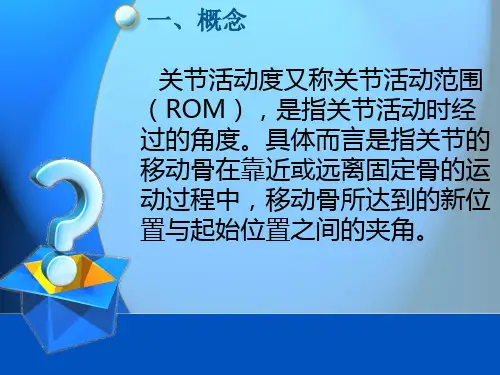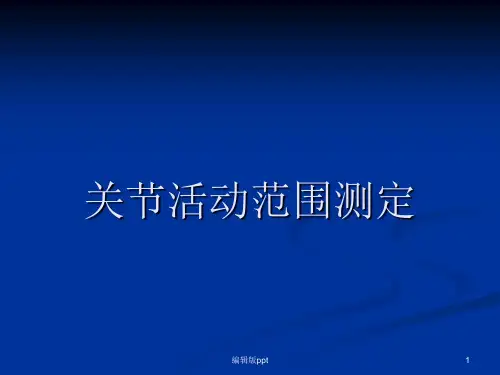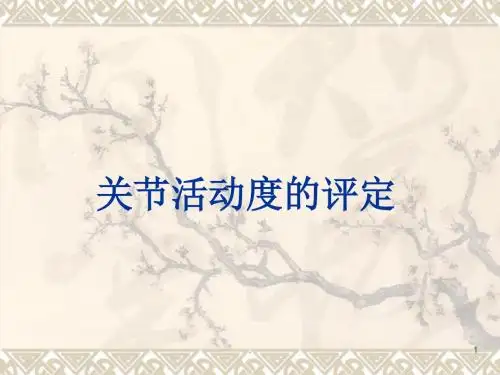适应证
关节炎症 脱位复位后 骨折愈合后 截肢 关节周围软组织损伤 关节继发性损害
禁忌证
关节脱位或骨折未愈合 肌腱、韧带、肌肉术后早期 骨化性肌炎
第二节 测量的方法及步骤
1.测量方法: 工具、体位、固定
2.测量步骤 3.一般原则及注意事项
测量工具
普通测角计:也称通用 量角器,是临床最常用 的测量关节角度的器械
两个臂:移动臂,标有 指针;固定臂,附有刻 度盘,两臂于一端以活 动轴固定,轴为测角计 中心
电子角度计(倾斜计)
Infotronic GONIO Sensors
The comprehensive range of this Goniometers and Torsiometers are ideal for quick, simple, and accurate measurement of joint movement in multiple planes. This sensors are lightweight and flexible, the sensors can be comfortably worn undetected under clothing, without hindering the actual movement of the joint.
关节本身的因素: 关节内骨折或软骨损伤 关节内游离体、关节积血或积液 类风湿性关节炎、骨关节炎 关节先天性畸形 均可引起疼痛、肌肉痉挛或软组织粘连,导致关
节活动度减少。
关节外因素:
关节周围软组织(肌腱、韧带等)损伤及粘连、 疤痕挛缩、 骨折、 肌肉痉挛、 严重的肢体循环障碍 周围神经损伤/中枢神经损伤 均可引起关节活动度下降
(1)球窝关节 3.多轴关节
